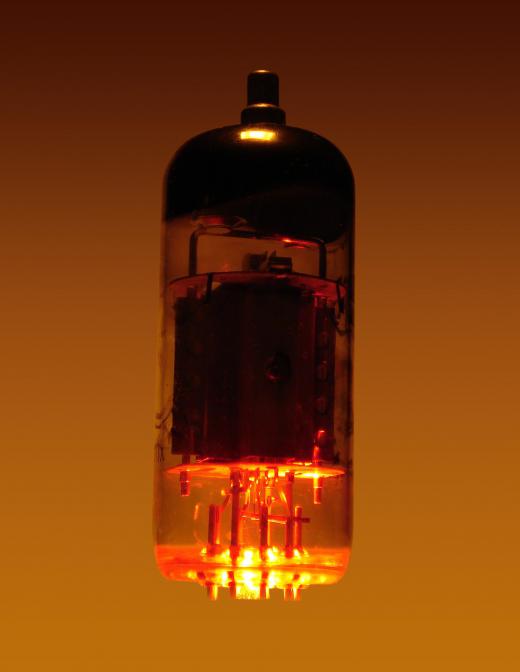What is a Particle Accelerator?
A particle accelerator, also known as an atom smasher or a particle collider, is a device that accelerates subatomic particles to high velocities and maintains them in small, consistent beams. Particle accelerators have many applications in common use and in experimental and theoretical physics research. The Large Hadron Collider, the largest particle accelerator in existence at the time of its construction, was designed to collide particles in the hopes of breaking them apart and discovering the theoretical Higgs-Boson particle. Much smaller accelerators are present in the form of cathode ray tubes in simple television sets.
Cathode ray tubes and X-ray generators, both used by many people on a daily basis, are both examples of low-energy particle accelerators. A cathode ray tube television has a vacuum tube containing one or more electron guns and the means to deflect the electron beam. The beam is deflected as needed onto a fluorescent screen, from which images are emitted. X-ray generators accelerate and collide high quantities of X-rays with a heavy metal target; anything in between the generator and the metal will augment the pattern of x-rays striking the metal. Medical professionals use this to diagnose problems inside of the human body.

Higher-power particle accelerators, such as those capable of triggering nuclear reactions, are generally used for scientific purposes. A particle accelerator used for physics experiments usually accelerate streams of subatomic particles in opposite directions at velocities near the speed of light. They then manipulate and collide these beams; the particles that make up the beams smash against each other and break apart. Physicists use special detectors to analyze the broken-down particles, searching for even smaller particles. Each new particle discovered by physicists provides a world of insight about the nature and makeup of all matter.
Many experimental particle colliders, especially the Large Hadron Collider, have caused concern among some physicists about the risk posed by such devices not only to the scientists involved but to the Earth as a whole. Some mathematical theories show the possibility that a high-power particle accelerator could cause the formation of miniature black holes. Most physicists, however, agree that these micro black holes, if produced, would present little or no threat as they would either dissipate into harmless Hawking radiation or grow too slowly to present any kind of reasonable danger.
A particle accelerator may seem to some to be a somewhat primitive tool, reminiscent of cavepeople bashing stones together to find out what exists inside. The scientific knowledge gained from such devices, however, is immense and will likely continue to be as particle accelerators become more and more powerful. The electron, for example, was discovered through the use of a cathode ray tube. Some theorize that the Higgs-Boson particle, if discovered, could provide the key to a much greater understanding of the physical world as a whole.
AS FEATURED ON:
AS FEATURED ON:











Discuss this Article
Post your comments